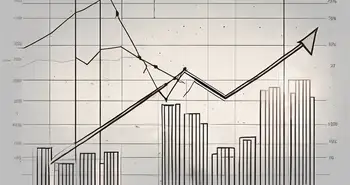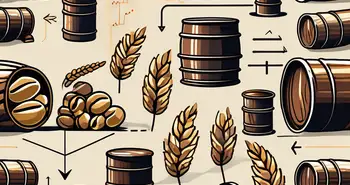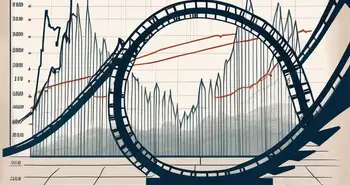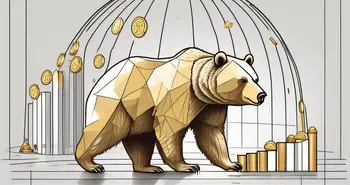A Recap of the History of Financial Bubbles
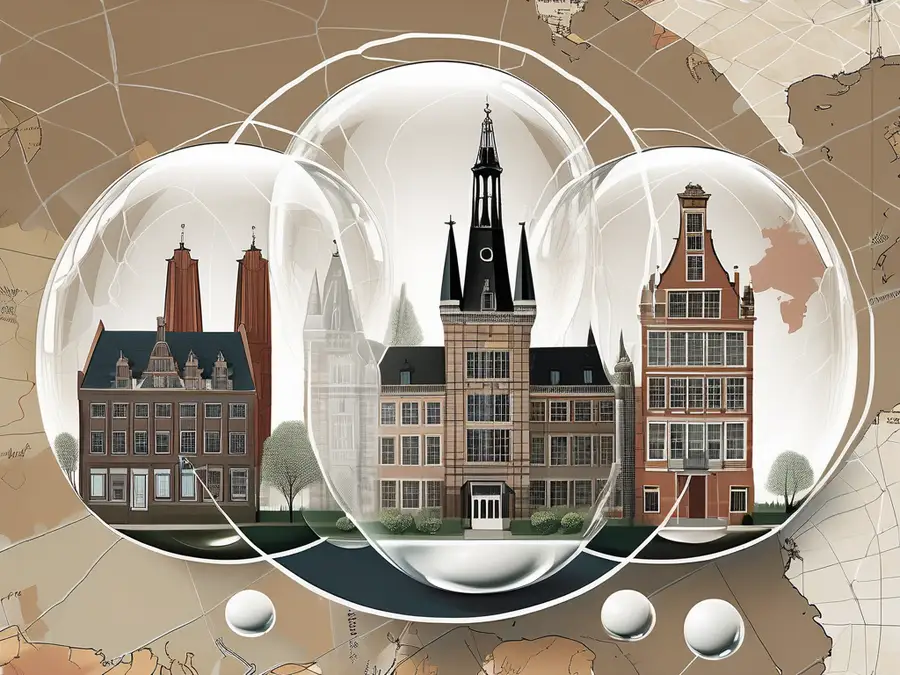
As an expert in economics, I have always been fascinated by the phenomenon of economic bubbles. These events, characterized by a rapid increase in the price of a particular asset, followed by a sharp decline, have shaped the history of financial markets and economies. In this article, we will delve into the world of economic bubbles, examining their causes, impact, and ways to prevent and mitigate them.
Understanding Economic Bubbles
Before we go any further, let's define what we mean by an economic bubble. An economic bubble occurs when the price of an asset, such as stocks, real estate, or commodities, becomes detached from its intrinsic value. This detachment is often fueled by speculative behavior and investor frenzy. The bubble continues to inflate until it ultimately bursts, leading to a significant price correction.
Definition and Characteristics of Economic Bubbles
Economic bubbles are typically characterized by irrational exuberance and a herd mentality among investors. The prices of the assets involved skyrocket, fueled by the belief that they will continue to increase indefinitely. However, underlying fundamentals often do not support such valuations, leading to an eventual collapse.
Take the dot-com bubble of the late 20th century, for example. During this time, investors poured money into internet-based companies, driving their stock prices to astronomical levels. However, many of these companies had little or no profits, and their valuations were based on future potential rather than concrete financials. When the bubble burst, billions of dollars in market value evaporated.
The Causes of Economic Bubbles
Understanding the causes of economic bubbles is crucial to grasping the dynamics behind these events. One primary driver is speculation. Investors, driven by the fear of missing out, flock to assets that are experiencing rapid price appreciation. This influx of capital fuels the bubble, pushing prices even higher.
Psychological factors also play a significant role in the formation and expansion of bubbles. The herd mentality and cognitive biases, such as confirmation bias and overconfidence, can create a self-reinforcing cycle of buying. People tend to believe that prices will continue to rise, ignoring warning signs and assuming they can exit the market before the collapse.
The Role of Speculation in Economic Bubbles
Speculation is a key ingredient in the formation of economic bubbles. Investors buy assets not for their intrinsic value, but with the hope of selling them at a profit to someone else in the future. This behavior can have a profound impact on market stability and the overall economy.
The Psychology of Speculation
Speculation is driven by our innate desire for quick profits and wealth accumulation. It is fueled by emotions such as greed and fear, which can cloud rational judgment. Investors often become enamored with the potential for huge returns, disregarding the risks involved.
During periods of economic stability and positive market sentiment, speculation tends to increase. The fear of missing out on lucrative investments leads investors to chase after the next big thing. This frenzied buying further inflates asset prices and sets the stage for a potential bubble.
The Impact of Speculation on Market Stability
While speculation can generate significant profits for early investors, it also poses risks to market stability. When a bubble bursts, it can trigger a cascade of selling as panicked investors rush to exit their positions. This mass selling can lead to a sharp decline in asset prices and increased market volatility.
Furthermore, the bursting of an economic bubble can have far-reaching consequences for the broader economy. It can lead to a widespread loss of confidence, dampen consumer spending, and stifle investment. In severe cases, it can even spark a recession, as we witnessed during the 2008 financial crisis.
Notable Economic Bubbles in History
Throughout history, several economic bubbles have left their mark on the financial landscape. Let's take a closer look at three prominent examples.
The Tulip Mania of the 17th Century
In the 1630s, tulip bulbs became the hottest commodity in the Netherlands. Prices skyrocketed, and people from all walks of life were investing in these beautiful flowers. At the peak of the mania, some rare tulip bulbs were selling for the price of a luxurious house. However, the bubble burst abruptly in 1637, leaving many tulip bulb holders with worthless assets.
The South Sea Bubble of the 18th Century
The South Sea Company was a British company established in 1711 to trade with South America. It quickly became a hotspot for speculation, aided by the government's endorsement and promises of immense profits. Investors flocked to buy shares in the company, driving prices to astronomical levels. When reality set in and profits failed to materialize, the bubble burst, causing a financial crisis that rocked the British economy.
The Dot-Com Bubble of the Late 20th Century
The dot-com bubble, which lasted from the mid-1990s to early 2000s, was fueled by the rapid growth of internet-based companies. Investors poured money into these tech startups, valuing them based on potential rather than actual earnings. However, when many of these companies failed to turn a profit, the bubble burst, wiping out billions of dollars in market value.
The Aftermath of Economic Bubbles
The bursting of an economic bubble can have long-lasting effects on financial markets and economies alike. Let's explore what happens in the aftermath of a bubble.
The Bursting of Bubbles and Economic Recession
When a bubble bursts, it often triggers a downturn in economic activity. The wealth and confidence that had been built up during the bubble give way to panic and fear. Businesses may cut back on investments and hiring, leading to job losses and reduced consumer spending. This can create a downward spiral, eventually resulting in an economic recession.
Long-term Effects on Financial Markets and Economies
Even after the initial shock, the effects of a burst bubble can still be felt for years. Investors become more cautious, demanding higher returns to compensate for the perceived risk. Financial institutions and regulators face increased scrutiny and are prompted to implement measures to prevent future bubbles from forming. Economies may take time to recover, as confidence needs to be rebuilt, and structural reforms may be necessary.
Preventing and Mitigating Economic Bubbles
While it may be impossible to completely eliminate economic bubbles, there are steps that individuals, institutions, and governments can take to minimize their impact.
Role of Government and Regulatory Bodies
Government intervention plays a crucial role in preventing and mitigating economic bubbles. Regulators can implement measures to enhance transparency, monitor market activity, and prevent excessive risk-taking. They can also enact stricter regulations on lending practices and financial transactions to limit speculative behavior. Additionally, central banks can use monetary policy tools to maintain financial stability and moderate excessive asset price increases.
Strategies for Individual Investors and Businesses
As a prudent investor or business owner, it's essential to remain vigilant and adopt strategies to protect yourself from the risks associated with economic bubbles. Diversification, spreading your investments across different asset classes, can help minimize losses in the event of a market downturn. Conducting thorough research and analysis before making investment decisions can also reduce the likelihood of falling victim to speculative bubbles.
Furthermore, maintaining a long-term perspective and avoiding succumbing to the allure of quick riches is crucial. Instead of chasing after hot investment trends, focus on investing in assets with solid fundamentals and a history of stable growth.
As an expert in economics, I can't stress enough the importance of learning from history and recognizing the signs of a potential bubble. Understanding the dynamics behind economic bubbles, their causes, and the measures to prevent and mitigate them is key to navigating the volatile world of financial markets.
FAQs
Q: What is an economic bubble?
A: An economic bubble is a period of rapid price appreciation in an asset that is not supported by its intrinsic value. It is often fueled by speculation and investor frenzy.
Q: What causes economic bubbles?
A: Economic bubbles are primarily caused by speculative behavior and investor herd mentality. Psychological factors, such as greed and overconfidence, also play a significant role.
Q: Can economic bubbles have a lasting impact?
A: Yes, economic bubbles can have long-lasting effects on financial markets and economies. They can lead to economic recessions, loss of confidence, and the need for structural reforms.
Q: How can individuals and governments mitigate the risks of economic bubbles?
A: Individuals can adopt strategies such as diversification and thorough research to protect themselves from the risks of economic bubbles. Governments can implement regulatory measures to enhance transparency, monitor markets, and prevent excessive risk-taking.
Q: Can economic bubbles have a lasting impact?
A: Yes, economic bubbles can have long-lasting effects on financial markets and economies. They can lead to economic recessions, loss of confidence, and the need for structural reforms.
Q: What is a crypto bubble?
A: When the value of digital assets such as cryptocurrencies suddenly increases dramatically as a result of unwarranted optimism and hype, this phenomenon is known as a crypto bubble. After then, there will be a huge price adjustment due to a burst.
Q: What can we learn from historical economic bubbles?
A: Historical economic bubbles teach us the importance of understanding the underlying fundamentals and recognizing the signs of potential bubbles. Learning from history can help investors and policymakers make more informed decisions and prevent future crises.
As an expert in economics, I have seen firsthand the destructive force of economic bubbles, but I have also witnessed the resilience of financial markets and economies. By understanding the dynamics behind economic bubbles, we can navigate these turbulent waters with caution and make sound investment decisions. Remember, the key is to remain vigilant, focus on the long-term, and never lose sight of the fundamentals.
As we reflect on the lessons learned from historical economic bubbles, it's clear that innovative approaches to investing can offer new ways to navigate financial markets. Morpher.com stands at the forefront of this revolution, offering a trading platform that harnesses blockchain technology for a seamless, cost-effective, and versatile trading experience. Whether you're looking to diversify your portfolio with fractional investing or take advantage of market movements through short selling and leverage, Morpher provides the tools you need to trade smarter. Embrace the future of investing and Sign Up and Get Your Free Sign Up Bonus today to experience a unique trading platform designed with your financial empowerment in mind.

Disclaimer: All investments involve risk, and the past performance of a security, industry, sector, market, financial product, trading strategy, or individual’s trading does not guarantee future results or returns. Investors are fully responsible for any investment decisions they make. Such decisions should be based solely on an evaluation of their financial circumstances, investment objectives, risk tolerance, and liquidity needs. This post does not constitute investment advice.

Painless trading for everyone
Hundreds of markets all in one place - Apple, Bitcoin, Gold, Watches, NFTs, Sneakers and so much more.

Painless trading for everyone
Hundreds of markets all in one place - Apple, Bitcoin, Gold, Watches, NFTs, Sneakers and so much more.





